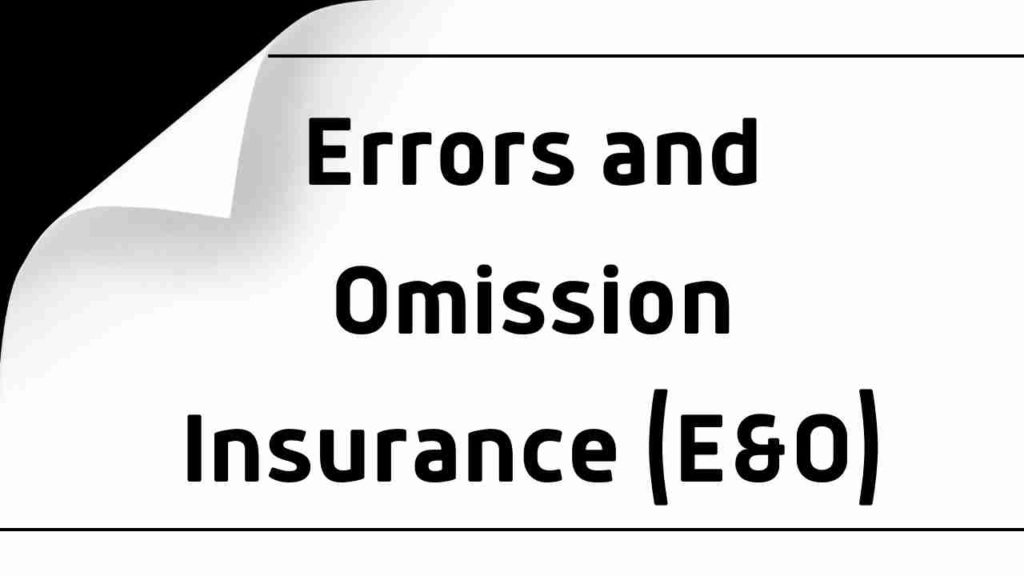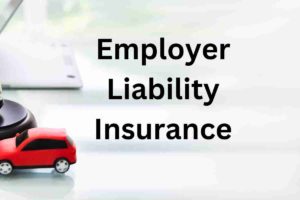E&O Insurance – Errors and Omission Insurance (E&O)

E&O Insurance – Errors and Omission Insurance (E&O)
A subcategory of professional liability insurance that defends businesses and their staff against claims made by customers that allege they received substandard or negligent service.
What exactly is meant by the term “Errors and Omissions Insurance” or “E&O”?
Errors and Omissions (E&O) insurance protects businesses and their employees against claims made by customers who allege careless conduct or insufficient work was performed. Professional liability insurance, of which Errors and Omissions (E&O) insurance is a subtype, is often required of those who provide professional services to their customers.
In a nutshell, errors and omissions insurance, sometimes known as E&O insurance, belongs to the larger category of professional liability insurance (PLI). Companies and their personnel who provide professional services are shielded from client allegations of negligent behavior or substandard work performance as a result of this protection.
There are a variety of factors that might influence the price of E&O insurance, including the sector, geographic location, revenue, size of the business, and policy coverage limits. Companies that face a greater likelihood of being sued are often subject to more expensive premiums.
In general, for errors and omissions, insurance, also known as E&O insurance, protects businesses against claims of negligence, missed deadlines, undelivered services, and more.
Acquiring Knowledge of Errors and Omissions Insurance
It is not unheard of for clients of professionals who provide services to have the right to file claims against those professionals. As a consequence of this, they require professional liability insurance, often known as PLI, in order to safeguard themselves against these kinds of lawsuits. The coverage of PLI extends to include either negligent behavior, malpractice, or misrepresentation. One of the numerous types of professional liability insurance (PLI) that protects against allegations of negligent or inadequate work is called errors and omissions (E&O) insurance.
E&O insurance is required of any and all businesses and people who render professional services or advice. For instance, there are medical professionals, legal advisors, financial planners, insurance brokers, engineering organizations, and so on. Claim settlement costs can be covered by E&O insurance up to the limit that is stipulated in the insurance policy’s terms and conditions. In most cases, it also covers the fees of going to court, which might likely be rather expensive.
During the process of producing portfolio attribution indicators, for instance, an investment management company erred and committed a mistake. It resulted in a poor decision on asset allocation, which led to a loss on the investment. Customers have the option to file a claim for damages against the company in the event of a loss. If the investment business had signed up for comprehensive E&O insurance coverage, the insurance company would have been responsible for paying the legal fees and any damage settlements that were reached.
The premiums charged for errors and omissions insurance are influenced by a number of factors, such as the type of business, the region in which it is located, the revenue generated by the company, its size, the policy coverage limitations, and more. Some sectors of the economy are more vulnerable to the financial impact of lawsuits than others. For instance, the risks that construction companies encounter often result in higher E&O insurance premiums since the mistakes they make can result in significantly higher financial losses due to property damage.
Due to the fact that being a large company typically comes with a significant chance of being sued and having to pay a high settlement cost, the prices for E&O insurance are proportionately greater as revenue increases. In general, businesses that have a strong history of not filing claims and that provide sufficient staff training are able to negotiate more favorable terms for their E&O insurance policies.
What Are the Covered Expenses Under E&O Insurance?
It is possible for the coverage of errors and omissions (E&O) insurance to fluctuate marginally from one insurance provider to another, depending on the specifics of the insurance policies. In general, errors and omissions insurance, often known as E&O insurance, protects the policyholder against claims of negligence, missed deadlines, undelivered services, and mistakes made at work. Clients have the right to seek compensation for damages that were incurred as a result of errors or mistakes made by professionals. One possible illustration of this would be a mistake that a financial planner makes on the return rate of a financial instrument.
When a company falls short of the minimum requirements set by their industry, they leave themselves up to accusations of negligence. If a customer is unhappy with the service they receive, they may accuse the company of being negligent, even if there were no errors made.
The failure of a tax preparation company to make tax payments for its customers in accordance with the terms of the service contract is referred to as “undelivered services.” An insurance agent who does not provide appropriate insurance coverage for a client is another example of this type of behavior.
Failure to meet deadlines can result in significant revenue losses for clients. As an illustration, a consultant failed to meet the stipulated time limit for delivering the due diligence report to a private equity investor. It was because of this that the investor did not submit a bid. In the event that the investor filed a lawsuit, the E&O insurance would pay for the associated costs.
What Doesn’t the Errors and Omissions Insurance Cover?
Customer injuries, employee injuries, contingent physical injuries, employee discrimination claims, and property damage to either business property or customer property are not covered by the E&O insurance policy. These types of claims fall outside the coverage parameters of the policy. The claims are covered by several different types of insurance for professionals, such as umbrella policies.
Injuries to customers, as well as damage to their property, are covered by general liability insurance. Injuries sustained by workers are compensated for by the company’s workers’ compensation insurance. Product liability insurance will pay for medical expenses associated with accidental bodily harm. Employment practices liability insurance, sometimes known as EPLI, protects employers against the financial impact of employment discrimination lawsuits brought by workers against their employers. In addition, for errors and omissions, insurance does not protect against criminal prosecution or wrongdoing committed with the intent to cause harm.
A significant number of E&O insurance policies do not extend coverage to temporary workers, claims filed in multiple jurisdictions, or claims made on work completed before the insurance was put into effect. When signing a contract for E&O insurance, companies need to ensure that they have a thorough understanding of the policy terms and coverage.
More Resources
CFI is the official supplier of the global Commercial Banking & Credit Analyst (CBCA)TM certification program. This program is meant to assist anyone in becoming a financial analyst of the highest caliber. The extra resources that are listed below will be helpful to you as you continue to advance in your career:
Insurance for Property Owners
Maximum Potential Loss for Life and Health Insurance Companies
Certification for Financial Analysts Working in Professional Corporations
By completing the online financial modeling coursework and training program offered by CFI, you can work toward earning your Financial Modeling and Valuation Analyst (FMVA)® certification.
Follow us on Twitter
Also Read How to Find the Best Construction Accident Attorney Near You







